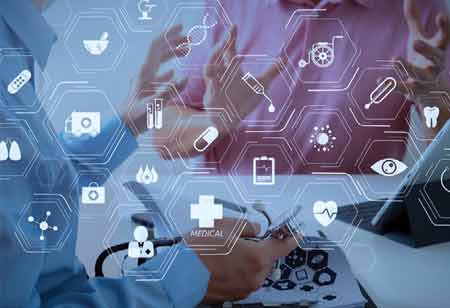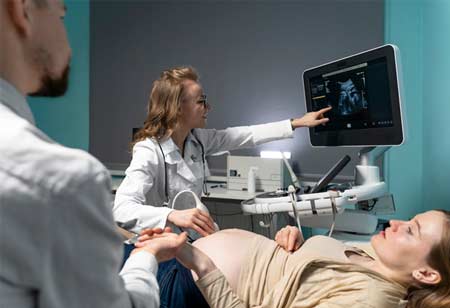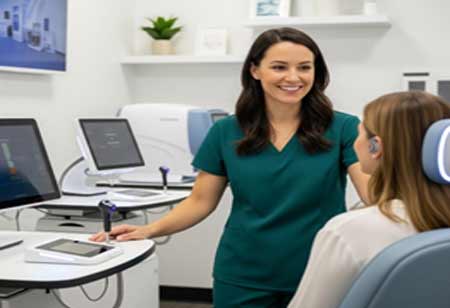Transforming Healthcare Delivery with Remote Patient Monitoring Services
Remote patient monitoring services reshape healthcare by enhancing access, reducing hospital burdens, enabling proactive care, and leveraging digital technologies to improve patient outcomes and system efficiency worldwide.

By
Medical Care Review | Friday, November 14, 2025
Stay on top of your health and well-being with exclusive feature stories on the top medical clinics and treatment centers, expert insights and the latest news delivered straight to your inbox. Subscribe today.
The global healthcare system is undergoing a profound transformation, driven by aging populations, the prevalence of chronic diseases, and the demand for accessible, cost-effective solutions. In this context, remote patient monitoring services have gained traction across hospitals, clinics, and home healthcare providers. The market reflects an increasing need for real-time health insights, personalized treatment plans, and improved patient engagement. RPM has substantial economic and societal implications. By blending advanced technologies such as IoT, AI, and cloud computing, RPM bridges the gap between healthcare providers and patients in a way that traditional care models cannot.
Factors and Technology Implementation
Several factors drive the global adoption of remote patient monitoring services. The conditions demand continuous management, which traditional episodic care models fail to deliver. The pandemic accelerated RPM adoption by highlighting the need for contactless, scalable healthcare delivery. Hospitals were overwhelmed, and providers turned to RPM solutions to monitor patients remotely, reducing in-person exposure while ensuring continuity of care. The experience demonstrated the efficiency and reliability of RPM, making it a permanent fixture in healthcare strategies.
From an economic perspective, healthcare payers and insurers are key drivers. They recognize that RPM reduces hospitalization costs, prevents emergency interventions, and extends the reach of healthcare professionals. Reimbursement frameworks in several regions now incentivize the use of RPM services, fueling further growth. IoT-enabled wearable devices such as smartwatches, glucose monitors, blood pressure cuffs, and ECG patches capture real-time data. The devices connect seamlessly with cloud-based platforms, ensuring secure storage and analysis. AI algorithms identify patterns, predict complications, and alert clinicians to potential risks before they escalate.
Telehealth integration allows providers to interact with patients, review dashboards, and adjust treatment plans remotely. Blockchain solutions enhance security by protecting sensitive health data while ensuring compliance with privacy regulations. Mobile health applications allow patients to visualize their own data, receive reminders, and track progress toward health goals. Such user-centric design enhances patient engagement, one of the most critical success factors in RPM.
Future of Remote Patient Monitoring
The RPM market is evolving with several major trends shaping its trajectory. Instead of reacting to symptoms, healthcare providers increasingly focus on preventing deterioration. RPM enables early detection of anomalies, allowing timely intervention. AI enhances the predictive capabilities of RPM, enabling risk stratification, personalized recommendations, and dynamic care adjustments based on real-time health data. RPM and telehealth services are converging to create a holistic virtual care ecosystem. Patients can consult doctors while their health data streams in simultaneously.
As patients prefer home recovery over hospital stays, RPM enables safe and cost-effective care at home, reducing the strain on hospital resources. RPM fits perfectly into value-based care models, where providers are rewarded for improved outcomes rather than service volume. Diabetes, hypertension, heart failure, and COPD patients benefit from continuous monitoring and personalized care adjustments. Patients recovering from surgery are monitored remotely to detect complications early and reduce readmissions. Aging individuals receive 24/7 monitoring for fall detection, cardiac activity, and other risks. RPM ensures safe monitoring of pregnancies and neonatal care.
Wearable devices track sleep, stress, and mood, supporting therapy for conditions such as depression and anxiety. The versatility of RPM applications positions it as a core healthcare delivery model in the future, not merely an add-on service. By leveraging IoT devices, AI-driven analytics, telemedicine, and secure data infrastructures, RPM enables real-time insights and proactive interventions. Its applications span chronic care, elderly support, surgical recovery, and beyond. Though challenges such as privacy, reimbursement, and infrastructure exist, practical solutions are already emerging.
Overcoming Challenges and Strategies for Success
RPM faces several challenges that must be addressed for widespread adoption. Sensitive health data is vulnerable to breaches. Ensuring end-to-end encryption, secure cloud infrastructure, and compliance with privacy regulations is critical. Blockchain and advanced cybersecurity measures offer solutions. Not all patients, especially elderly individuals, are comfortable using wearable devices and mobile applications. Education, simplified interfaces, and caregiver integration can ease adoption challenges.
While some countries have introduced reimbursement policies, others lag in this area. Policymakers must establish standardized reimbursement models to accelerate the adoption of these technologies. In rural or underdeveloped regions, limited internet connectivity hinders the deployment of RPM. Expanding broadband access and deploying offline-capable devices can mitigate this challenge. Many healthcare institutions struggle with legacy systems that lack interoperability.
For providers, it reduces burnout, optimizes resources, and enhances efficiency. Healthcare systems benefit from reduced costs, fewer readmissions, and better population health management. Insurers and payers see lower claim costs and improved member satisfaction. Healthcare systems globally face growing demand and limited resources. By decentralizing care and enabling proactive management, RPM fills a crucial gap in healthcare. As digital literacy increases and technology becomes more accessible, RPM adoption is expected to expand to developing regions, helping to bridge healthcare disparities.
Remote patient monitoring services represent one of the most transformative shifts in modern healthcare. Driven by demographic trends, the prevalence of chronic diseases, and technological advancements, RPM offers a sustainable and patient-centered model of care. Factors such as the pandemic, payer incentives, and digital innovation have accelerated its adoption, making it indispensable in today’s healthcare environment.







